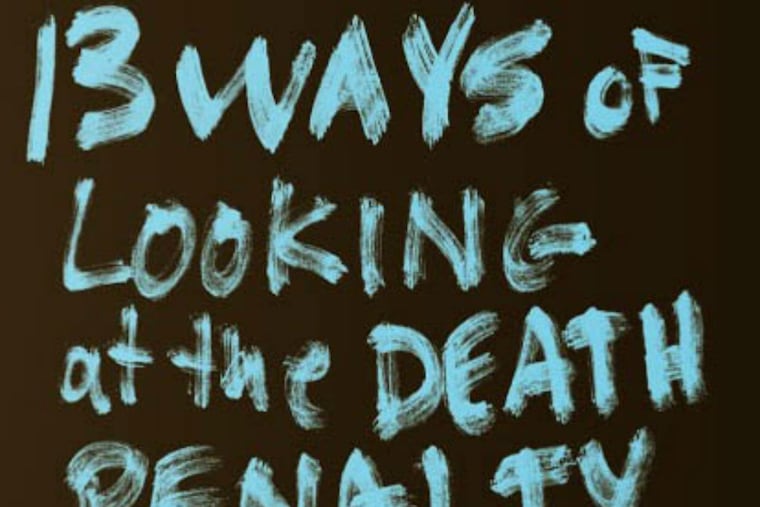New ways of looking at the death penalty
Forgiveness, redemption, and society's need to rise above vengeance and retribution are the themes of Mario Marazziti's 13 Ways of Looking at the Death Penalty.

13 Ways of Looking at the Death Penalty
By Mario Marazziti
Seven Stories Press. 240 pp. $18.95
nolead ends nolead begins
Reviewed By Joseph A. Slobodzian
nolead ends Forgiveness, redemption, and society's need to rise above vengeance and retribution are the themes of Mario Marazziti's 13 Ways of Looking at the Death Penalty.
Marazziti has campaigned against capital punishment for years. A member of the Chamber of Deputies in the Italian Parliament, Marazziti cofounded the World Coalition Against the Death Penalty in 2002 and is spokesman for the Community of Sant'Egidio, a progressive Catholic lay organization whose mission is peacemaking and human rights.
Marazziti and Sant'Egidio have collected more than three million signatures worldwide seeking an end to the death penalty. He was a moving force behind passage of the U.N. General Assembly's 2007 resolution calling for a universal moratorium on the death penalty.
So what could an Italian liberal tell the United States, where capital punishment has long been a trench separating sides in the culture wars?
Marazziti's message is that the United States, despite its history, pride, and xenophobia, is part of the world - a world increasingly turning its back on capital punishment. Its practice is biased and faulty, he writes, and it demeans executioner and executed.
It's not just the rest of the word. Thirty-two states still allow capital punishment - a majority, but a shrinking one. New Jersey abolished the death penalty in 2007. Pennsylvania, which last executed someone in 1999, could become another. In February, Gov. Wolf imposed a moratorium on executions pending the report of a task force studying the death penalty's effectiveness and fairness.
And despite the recent death sentence for convicted Boston Marathon bomber Dzhokhar Tsarnaev, Eric H. Holder Jr., before stepping down as U.S. attorney general, called for a moratorium on executions pending a Supreme Court decision on the use of lethal injection (the court, in a 5-4 ruling in late June, upheld use of the drug midazolam).
There's no question Marazziti's book will not change the true believers among death-penalty advocates. Ever optimistic, however, he is campaigning to abolish capital punishment in the United States by 2025.
For the rest, Marazziti has written an interesting, compelling look at the cultural and religious underpinnings of the death penalty and how we got here. More important, his interviews with U.S. death-row inmates - living and now-deceased - their survivors, and their victims' families highlight the gray of a subject too many paint in black and white.
His chapter "Life Row" interviews Bud Welch, whose 23-year-old daughter, Julie, was killed in the 1995 bombing of the Murrah Federal Building in Oklahoma City. Welch talks of his hatred for convicted bomber Timothy McVeigh (who was executed) and his desire for vengeance without a trial.
"I wanted the [expletive] fried," Welch told Marazziti.
Welch writes of days of drinking, cigarettes, and hangovers until he realized he was nursing hatred as deep as the one that spurred McVeigh to kill 168 innocent people. Welch's journey ultimately takes him to meet McVeigh's father and sister.
"I had found someone who was a bigger victim of the Oklahoma bombing than I was," Welch told Marazziti. "I can speak in front of thousands of people and say wonderful things about Julie. If Bill McVeigh meets a stranger he probably doesn't even say he had a son.
"About a year before the execution I found it in my heart to forgive Tim McVeigh," Welch added. "It was a release for me rather than for him."
Joseph A. Slobodzian is an Inquirer staff writer covering the criminal courts in Philadelphia.